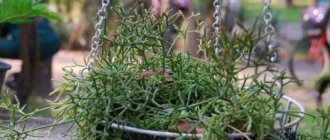Chrysanthemums need to be replanted regularly. The plant is a perennial. After a certain time, it needs to change its place, otherwise the intensity of growth and flowering will decrease. It is important for gardeners to know the nuances of autumn and spring transplantation of chrysanthemums so that the bush quickly takes root and blooms.
In order for chrysanthemums to bloom magnificently on the site, the bushes must be replanted regularly
When to replant chrysanthemums
The shrub can grow in one place for up to 2-3 years. After this time, the chrysanthemum needs to be replanted. If this procedure is not followed, the bush will begin to hurt, the flower baskets will begin to become smaller, and over time, flowering will stop completely. And, of course, many are interested in the question of when is the best time to replant a plant so as not to cause severe harm to it.
The most favorable time to transplant chrysanthemums is spring. In the fall, the bushes need to be dug up along with a lump of earth, planted in a pot and put in a dry basement for the winter. However, winter-hardy varieties of flowers can be replanted in the fall. It is best to do this in late September-early October. The ideal day for planting would be a cloudy or slightly rainy day.
Why is it necessary to replant a plant in spring? The fact is that for a culture, moving from one place to another is a great stress. If this is done in the fall, there is a high probability that the chrysanthemum will not have time to properly strengthen before the cold weather and will not survive the winter.
Another important point is the ease of performing the work. In the spring, after the snow melts, the ground is moist and pliable, which makes the bush much easier to dig out. In this case, the risk of injury to the roots is minimized, while removing the bush from frozen soil is much more difficult.
The time for planting depends on the climatic conditions of the region. Relocation should begin when the weather is warm enough and the threat of frost has passed - approximately at the end of April-beginning of May. Again, you need to replant in cloudy weather or in the evening.
Next, we will consider the features of spring and autumn chrysanthemum transplantation.
Brown scale insect
Small round insects. They settle on the top of the leaf, in the leaf axils, on the stems. Their food is plant sap. Yellow spots appear on the leaves and merge. The leaf blades will curl and dry out, followed by disease in the stems.
Control measures:
spray the entire plant with insecticides.
When you received a potted chrysanthemum as a gift or purchased it yourself, do not rush to throw it away after it blooms. You have the opportunity to rejoice in its spring awakening and see it bloom again in summer and autumn.
Please like and subscribe to the channel “
About Fazenda ”.
This will allow us to publish more interesting gardening articles. https://podomu.info/comfort/plants/bloomy/various/kogda-cvetut-hrizantemy.html
https://zen.yandex.ru/media/id/5c169e6f87f1e000ac197a44/5c84c3e335b95200b2c3e051
Spring transplant
Transplanting chrysanthemums at this time of year involves dividing the bush. All work is carried out in stages and consists of the following activities:
- Choosing a site for a flower bed. It is best to choose an area that is well lit by sunlight. Groundwater should not lie very close to the soil surface. But, if there is such a problem, then coarse sand must be added to the holes. This way we will provide the transplant site with a drainage system. Before replanting, dig up the flowerbed to the depth of a spade and remove all plant debris.
- Preparation of bushes. If the soil in the flowerbed has dried out before replanting, it needs to be moistened abundantly. This way the chrysanthemum is easily removed from the ground and its roots are not damaged.
- Dividing the bush. After you have removed the chrysanthemum, carefully shake off the soil from the roots. Next, take a sharp knife and divide the mother bushes so that a root with shoots remains on each part.
- Transfer. Dig holes at a distance of 50 cm from each other. They should be 18-22 cm deep. Carefully straighten the roots of the seedlings, place them in the holes and sprinkle them with a nutrient composition, that is, soil mixed with peat or humus. Lightly compact the soil with your palms.
- Water the bushes with water. To do this, it is better to use settled or rainwater. Make sure that the drops do not fall on the foliage, as this may negatively affect the decorative appearance of the bush.
In the first few weeks after transplanting, the flowerbed should be moistened as often as possible. It is important to avoid stagnation of water, otherwise the roots will rot. After 2 weeks, it is permissible to apply fertilizer. For chrysanthemums, liquid mineral fertilizers containing nitrogen, phosphorus and potassium are suitable. Don’t forget about loosening, this will saturate the plant’s roots with oxygen.
It is worth noting that only frost-resistant varieties that have wintered in open ground need to be replanted using this method in the spring. Bushes that have been dug up, planted in a pot and placed in the basement must first be prepared. They need time to get stronger and adapt to the new temperature regime. To do this, pots with bushes need to be moved outside 7-10 days before planting. Next, transplantation and further care are carried out in the above manner.
Nuances of the procedure
Transplanting the plant to another place in the autumn is very beneficial in terms of development and strengthening of the root system. Strong frost resistance develops, which will have a great effect on the winter quarters. The best period for replanting a plant begins after a stable warm temperature has been established. In spring, it is excellent to plant chrysanthemums sprouted at home, varieties that bloom in summer.
To replant chrysanthemums in open ground, it is necessary to choose the right variety depending on the climatic conditions of the region. Today, many varieties have been developed that can withstand even the coldest winters and do not require additional care or digging. Chrysanthemums should be replanted in the fall carefully, following the rules, then the plant will delight with its flowering for many years.
During flowering
The most favorable time for chrysanthemum to be replanted is from September 15 to October 10. Rainy weather during this period will contribute to better rooting and adaptation in open ground.
During flowering, chrysanthemum is more vulnerable, so you should refrain from replanting the flowering plant in October. The most favorable time to replant chrysanthemums is the beginning of September, then the flowering plant will have time to take root before frost.
You can replant a blooming chrysanthemum in the fall using the following algorithm:
- prepare the area for replanting, for which you first dig a trench of arbitrary length, 50 cm deep;
- the bottom must be drained with river sand, which will improve the outflow of excess moisture;
- prepare an earthen substrate from the top fertile layer of soil and peat;
- place the plants one at a time in the trench, leaving an interval between them;
- pour water at room temperature.
Transplanting from a pot
In order to properly transplant a chrysanthemum in open ground conditions, it is necessary to take into account many factors, especially pay attention to the planting sites
- The place for transplantation should be well lit.
- Lowlands that can be flooded and places with high groundwater levels should be avoided.
- Autumn planting requires careful checking of weather conditions for the next 2 weeks; if the newly transplanted plant is exposed to frost, it will be lost.
- The soil for planting must contain a neutral or slightly acidic pH.
- Flowerbeds should not be placed in a shaded area, otherwise there will be no flowering.
- For replanting in the spring, you need to choose early varieties, and in the fall - late ones.
Replanting chrysanthemums in the fall, as in the spring, should be done in previously prepared places. You cannot plant plants immediately after purchase, if we are talking about the spring thaw, you need to give them time to adapt to outdoor conditions, especially if the chrysanthemum was stored indoors.
Drainage made of stones or broken bricks is placed in dug grooves 50 cm deep. Next, add soil mixed with humus, peat and sand in proportions 1:1. The soil is left for several days so that it is enriched with minerals, and then the chrysanthemum begins to be replanted.
Purchased seedlings in a pot must be carefully removed. To do this, the plant is filled with water, softening the earthen lump. The rhizome should be washed to remove any remaining soil.
Next, place the flower in the hole and sprinkle it with soil, trying to fill all the voids formed when filling the soil. Lightly compact the top layer of soil and water with warm water.
An interval of 20-30 cm should be maintained between plants so that the flowers do not interfere with each other’s growth. Blooming chrysanthemum can be planted at a distance of 40 cm, depending on the size of the bush.
Autumn transplant
In autumn, chrysanthemums still bloom in the garden. Flowering bushes need to be replanted with extreme care, since the slightest damage to the roots can have a detrimental effect on them. Gardeners are still arguing about the autumn transplantation of chrysanthemums. Some don’t see the point in this, while others, on the contrary, argue that this way the root system develops better and frost resistance increases.
The process of transplanting chrysanthemums in autumn is practically no different from spring, but has its own characteristics:
- Preparing the flower bed. While digging the soil, add organic fertilizers - compost or peat. Do not overdo it with the quantity, there should be 500-600 g per 1 square meter. m. Otherwise, the plant will increase its leaf mass to the detriment of its flowering.
- Preparation of the bush. Cut the roots around the plant within a radius of 20-30 cm using a shovel. This promotes the formation of new roots and will help the chrysanthemum quickly take root in a new place.
- Digging up a bush. Water the plant generously right at the root and carefully dig it up along with a lump of earth.
- Transfer. Since we will plant the bush with a lump of earth, the depth of the holes must be increased to 40 cm. Water the soil with the “Kornevin” solution and carefully place the bush with the soil in the hole, cover it with soil and compact it with your palms.
- Water the bush generously.
Over time, the soil around the transplanted bush may settle, so you will need to add more soil. You also need to take care of it, that is, you need to water it abundantly until frost sets in, weed the weeds and carefully loosen the top layer of soil. In addition, pruning will be required. For small-flowered varieties, you need to pinch the tops, after which the side shoots will begin to actively grow. Thanks to this, the bush will acquire a spherical, lush shape. In large-flowered varieties, on the contrary, side shoots are removed. Before frost sets in, mulch the soil with sawdust or straw. Also, do not forget to insulate the bushes for the winter.
Transplanting chrysanthemums is not a very difficult, but responsible task. When answering the question of when can chrysanthemums be replanted, we will answer that this can be done both in autumn and spring. But it’s better, of course, to do this in the spring - the bushes have a better chance of taking root and settling down in a new place. If you replant before winter, there is a risk that the flowering bushes will not have time to adapt to the new location. We must not forget that only winter-hardy varieties can be transplanted directly. More heat-loving types of chrysanthemums need to be dug up, planted in a pot and stored in the basement.
What to do after flowering
After the flowering period ends, it is right to give the chrysanthemum a rest. If the buds stop appearing and the stems begin to lean to the sides, the plant can be cut off almost at the root, watered and placed in a cool place. There is no need to water anymore at this time.
When spring comes, the chrysanthemum will begin to grow again. The pot needs to be taken out and placed in its usual place; replanting will not be unnecessary. Next, you should take care of the formation of the bush. It is regularly pinched so that the plant has an attractive shape. Otherwise there will be one tall stem with a small number of buds.
Growing chrysanthemums requires some effort. But if you care for them correctly and replant them on time, using suitable soil, the plant will bloom profusely and brightly in the fall.
Transplanting chrysanthemums in autumn
Nature falls asleep. But among this gray colorlessness, one of the most unpretentious flowers in any flower bed - chrysanthemums - delight us with bright spots until the very frost. And often, passing by a flowerbed, we notice a beautiful color and realize that we would like to see this beauty in our area. Chrysanthemum is a beautiful autumn flower that looks very impressive in autumn flower beds. However, this plant is not for lazy people. The chrysanthemum needs to be regularly watered, fed and preferably shaped if you want it to grow into a fluffy ball. In our article we will talk about replanting chrysanthemums in the fall.
In the process of selection, simple inflorescences have almost completely replaced semi-double and double ones, in which the inflorescence has a cap of multi-row reed flowers. But in addition to double and simple inflorescences, there are other forms: anemone-shaped, tubular, Chinese, peony-shaped, pompom-shaped, decorative, arachnid, etc. Often the difference lies in the shape of the reed flowers - in some varieties they are straight, in others they are slightly curved like a boat, in others they are slightly spiral.
Most often, perennial frost-resistant chrysanthemums of Korean selection are used for garden landscaping, as they are the most unpretentious and frost-resistant; they are often popularly called 'oak' - due to the shape of the leaves, reminiscent of oak leaves.
All varieties of chrysanthemums can be divided according to flowering periods into:
- Early bloomers - bloom at the end of August. These varieties are usually low-growing and dense bushes about 25-35 cm tall, used in borders.
- Medium flowering - bloom in early September, mainly with an average height of bushes of 50-60 cm.
- Late flowering - bloom at the end of September, beginning of October, mostly tall, up to 100 cm or more, require garter.
Chrysanthemums bloom for more than a month. Low-growing varieties, as a rule, have very decorative foliage, which allows the formation of multi-tiered flower beds that bloom from late summer to late autumn.
When can you replant chrysanthemums in the fall?
It is better to replant chrysanthemums in the spring, and in the fall, dig up the bushes along with a large lump of earth and put them away for the winter in a dry basement with a temperature of +5 degrees. But if you have winter-hardy varieties, then you can replant them in the fall, you just need to calculate the planting time correctly. The best time to plant chrysanthemums in the fall is late September - early October. A cloudy or even rainy day will be the most ideal day for planting.
How to divide chrysanthemums in autumn
Usually chrysanthemums are propagated by cuttings, dividing the bush or separating young shoots from the mother bush. There are two periods when chrysanthemums can be divided. This:
The process of dividing chrysanthemums is very simple. Dig up the bush, divide it into parts and immediately plant it in the prepared bed. Cuttings of chrysanthemums. In the fall, cut shoots from the bush 7–10 cm long and plant them in perlite or washed river sand, poured into a seedling container in a layer of 3–4 cm. In a few days you will have rooted plants.
Place to plant chrysanthemums in autumn
Chrysanthemums prefer sunny areas. It is better to lay out the bed on a hill. In the shade the plant looks depressed. The flower is sensitive to groundwater. If they lie close to the roots, good drainage will be required. River sand can be used as a drainage layer.
The soil on the site should be loose, preferably neutral or slightly acidic. If the soil for planting is too heavy, then it is enriched with peat, humus and rotted manure. No more than 0.5 kg of fertilizer is added to each hole, otherwise next year the plant will have a good crown, but flowering will be sparse.
How to prepare the soil for planting chrysanthemums in the fall
If the groundwater in your area is shallow, or there is no other place for replanting chrysanthemums, then you need to equip the chrysanthemum replanting site with a drainage system using coarse sand. The soil should not compact itself. Peat, compost or rotted manure are added to heavy soils.
Don't overdo it with fertilizers! If there are too many of them (more than 0.5-0.6 kg per hole), then you will thereby increase the leaf mass of the plant, to the detriment of abundant flowering.
Planting chrysanthemums in autumn
The transplant process is simple:
- Chrysanthemum bushes are carefully dug up and divided into parts so that each cutting has a root.
- The trench for chrysanthemums is made about twenty centimeters deep.
- The bottom of the trench is covered with a mixture of compost and mineral fertilizer (superphosphate and potassium). Top dressing is sprinkled with dry soil.
- Chrysanthemum cuttings are lowered into the trench so that the distance between them is no more than half a meter.
- Then the trench is filled up and watered with water.
- If the stems of transplanted chrysanthemums are tall, they are tied to pegs so that they are not broken by a gust of wind.
- The flowerbed is covered with a ten-centimeter layer of a mixture of peat (sawdust) and ash.
With the onset of winter cold, protection from freezing is provided by covering with dry leaves or agrofibre.
Fertilizing transplanted chrysanthemums in autumn
Preparation of chrysanthemums for winter begins in different regions in different ways and depending on their variety. There are varieties that need to be dug up in the fall and then stored in a dark and cool place. And some varieties overwinter well in the ground. They begin feeding from the end of August to the beginning of September. This is the most suitable period for applying fertilizer, since the soil has not yet cooled down and the flower can absorb nutrients well. If fertilizers are applied later, then not all nutrients will be absorbed and the flower will go into winter weakened. For the full development of the root system, chrysanthemums are fed with fertilizers. Every bush is fertilized. Organic matter saturates the soil best. But you can enhance the positive effect with superphosphate and potassium preparations. The main thing to remember is that when using chicken manure or compost, they must be diluted with water. The ratio of organic matter and water is one to ten. Otherwise, you can harm the roots of chrysanthemums.
Caring for chrysanthemums in autumn
The next stage of preparing a chrysanthemum for winter in the fall: pruning it. It is needed by plants that overwinter in open ground and in a dug-out state. The maximum length of stumps that need to be left is 10 cm. Pruning is carried out with the onset of stable cold weather.
Autumn care for chrysanthemums overwintering in a flowerbed does not end with pruning. They will have to be well trained. There should be no holes around each bush. They are places where water accumulates. And this will lead to the chrysanthemums getting wet.
In areas where winter begins with heavy snowfall and the snow cover remains throughout the winter, nothing further needs to be done. Nature itself took care of the shelter of the chrysanthemums. Otherwise you will need to do it yourself. It’s just important not to overdo it. After all, in a warm winter, shelter can only cause damage. Because the bush underneath will dry out.
Experienced gardeners recommend building a shelter gradually. At the first stage, a series of bricks are supposed to be laid around the chrysanthemums. They will be the basis for a wide board or piece of slate. You will get a mini-house for chrysanthemums. It protects against excess moisture and provides soil ventilation.
When persistent cold sets in, fir branches should be placed on this “house”. Dry leaves or cut branches can be used as a replacement. The main thing is that the covering material is not very heavy and dense. If the plant was replanted in the fall and you want it to overwinter, keep in mind that only frost-resistant varieties of chrysanthemum will be resistant to frost; all other plant varieties must be dug up with soil for the winter and placed in a cellar, basement or any other cool place.
Based on the above, we see that replanting chrysanthemums in the fall and caring for chrysanthemums in the fall is not labor-intensive, but all processes are important, including autumn feeding of chrysanthemums. Thus, our flower will be able to survive the winter well and next year will again delight with its lush blooms.
Transplanting chrysanthemums in autumn
Rules of care
Caring for a transplanted plant is easy if you follow all the rules and time frames. Watering seedlings should be moderate, depending on weather conditions.
Caring for chrysanthemums in autumn involves preparing for the upcoming frosts. Timely application of fertilizers will help you easily endure the winter cold and protect the root system from frostbite. Before winter, there is no need for nitrogen-containing fertilizing; it provokes rapid growth of new shoots, which will lead to the death of the plant.
It is necessary to use phosphorus-potassium fertilizers in the following proportions:
- 1 kg of manure per 5 liters of water or 1.25 kg of chicken manure per 5 liters of water;
- potassium chloride 3 g per 2 liters of liquid;
- dry superphosphate - 12 g per 2 liters of water.
Replanting the plant in the fall will require one fertilizer. Fertilizing should be applied before mid-October so that the chrysanthemum rhizome has time to absorb all the necessary microelements to preserve minerals.
Plant care also includes pruning:
- remove dead wood and damaged shoots;
- limp, dried leaves must be pruned;
- leaf blades and stems with signs of fungal infections and diaper rash are cut off and burned.
Trimming dried shoots will prevent the formation of rot and diaper rash in winter shelter conditions. If you carry out the procedure of formative shortening of the shoots, you can save the plant from frost, the flower will consume less energy.
One of the advantages of shortening is the small size of the plant, which will allow you to spend less materials on shelter.
How to replant in spring
The crop can be replanted at the end of the winter period, after the snow has melted. In this case, the plant will have time to get stronger by winter and will calmly endure the cold.
Choosing a site for a flower bed
The culture feels comfortable in flower beds that are well lit by sunlight. Should not be close to the surface of groundwater. If they lie shallow, then coarse sand is added to the holes.
Preparation of bushes
The plant is carefully dug up without damaging the roots. If the soil is dry, it is necessary to moisten it enough to easily remove the crop.
Dividing the bush
Each sprout is separated from the mother root with a sharp knife. Each part must have roots and shoots.
Transfer
An undivided bush or its parts are planted in separate holes, at a distance of 25 centimeters from each other. The holes must be prepared in advance in the fall. Humus mixed with garden soil is added to each hole. The depth of the pits is 20 centimeters.
Watering
To root the crop after transplanting, it is necessary to water it frequently. You also need to ensure that there is no stagnation of water. When shoots actively grow, harmful insects may attack. Therefore, you should periodically inspect the bushes in order to identify pests or diseases in time.
Preparation
Preparing chrysanthemums for transplantation involves the following steps:
- choice of location;
- preparation of planting material.
To replant chrysanthemums, choose an area protected from the wind (for example, near the wall of a house) and illuminated by the sun for up to 5 hours a day. Ideal for the plant is loose, fertile soil with neutral acidity. Heavy soil is fertilized with humus and dug up; when high groundwater passes, sand is added to each hole. Transplantation is carried out in cloudy, cool weather. Chrysanthemum is a moisture-loving plant, but it does not tolerate low areas with stagnant water.
Plants purchased in a pot in a store in the summer must be replanted as soon as possible after purchase, since they are sold using temporary soil with a short lifespan. The seedling is carefully removed from the pot, the roots are washed, and they are inspected for mold and rot. To prevent fungal diseases, the roots are kept in a fungicide solution for 30 minutes.
Home seedlings in cups begin to be hardened a week before transplantation, taken out to the balcony or plot for the day, and transferred back indoors at night. 3 days before the expected day of planting, the seedlings are left on the site overnight. The soil in the cups is kept moist.
To transplant the perennial chrysanthemum to another location, select a sunny area located on an elevated site and protected from the wind.
Before digging, the plant is watered abundantly so that when removed from the ground there is less trauma to the roots, and it is left until the next day to better soften the soil.
How to replant in the fall
Autumn replanting is carried out during the flowering of the bushes. It is advisable that the day is cool and not sunny.
Important: during autumn planting, the most favorable conditions are created for the crop so that it has time to take root before the onset of cold weather.
Preparing the flowerbed
The soil for replanting is prepared in advance. The following are placed in the hole in layers:
Since the roots grow parallel to the soil, they should not be buried. For tall varieties, additional support is provided.
Preparation of the bush
Preparing the plant for replanting can begin before the onset of frost. At this time, the roots around the crop within a radius of 25 centimeters are cut with a shovel. This promotes the formation of young roots, which allows the bush to quickly take root in a new place.
Digging up a bush
Before digging, it is necessary to thoroughly moisten the soil around the plant. Then the bush is removed with a large lump of earth, carefully so as not to damage the roots.
Transplantation into open ground
The size of the hole for the plant should be larger than necessary. This is done so that the plant with the dug up lump of earth enters the hole. The depth of the pit is 35-40 centimeters. For rapid growth and development of the root, it is recommended to add a biostimulant to the soil.
After this, the bush is placed in a hole and covered with soil. You can compact the top with your palms. After transplanting the crop, it is recommended to cut off all the flowers so that the bush does not waste its nutrients on them.
Watering
During transplantation, the crop should be watered abundantly. If the weather is dry all the time, then after 2-3 days the plant needs to be watered again.
It is important to ensure that the soil is always moist and does not dry out, since during the rooting period the plant needs a sufficient amount of moisture and nutrients.
Rules of care
Caring for a transplanted plant is easy if you follow all the rules and time frames. Watering seedlings should be moderate, depending on weather conditions.
Caring for chrysanthemums in autumn involves preparing for the upcoming frosts. Timely application of fertilizers will help you easily endure the winter cold and protect the root system from frostbite. Before winter, there is no need for nitrogen-containing fertilizing; it provokes rapid growth of new shoots, which will lead to the death of the plant.
It is necessary to use phosphorus-potassium fertilizers in the following proportions:
- 1 kg of manure per 5 liters of water or 1.25 kg of chicken manure per 5 liters of water;
- potassium chloride 3 g per 2 liters of liquid;
- dry superphosphate - 12 g per 2 liters of water.
Replanting the plant in the fall will require one fertilizer. Fertilizing should be applied before mid-October so that the chrysanthemum rhizome has time to absorb all the necessary microelements to preserve minerals.
Plant care also includes pruning:
- remove dead wood and damaged shoots;
- limp, dried leaves must be pruned;
- leaf blades and stems with signs of fungal infections and diaper rash are cut off and burned.
Trimming dried shoots will prevent the formation of rot and diaper rash in winter shelter conditions. If you carry out the procedure of formative shortening of the shoots, you can save the plant from frost, the flower will consume less energy.
One of the advantages of shortening is the small size of the plant, which will allow you to spend less materials on shelter.
How to transplant into a pot correctly
There are varieties of crops that should be transplanted into pots for the winter and brought into a cool room.
The size of the container is selected according to the size of the excavated crop. If the plant is small, a pot with a diameter of 10 centimeters will do. When transplanting three bushes at the same time, take a pot with a diameter of 12 centimeters. If 5 cuttings are planted, a container of 15 centimeters will do.
When transplanting in groups, plants are selected according to height and placed along the edge of the container, tilting them outward.
Shelter for the winter
Wintering chrysanthemums in open ground requires shelter. It is especially important to cover varieties with poor frost resistance. In regions with warm climates, the shelter is made from natural materials:
- dry grass and leaves;
- pine branches;
- sawdust shavings.
Cold and humid climates require a more careful approach to winter insulation. They use available materials at hand: brick, plywood, seedling boxes, thick cardboard.
The shelter must have good ventilation, otherwise the plants will rot over the winter from a fungal infection. There are several ways to insulate plants for the winter:
- place bricks on the sides and cover with plywood on top;
- at the first snow, make huge snowdrifts in the flower beds;
- cover the flowers with burlap.
{SOURCE}











